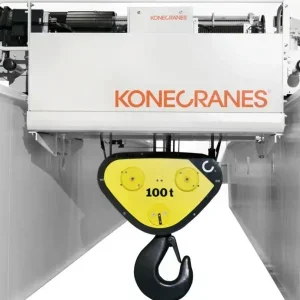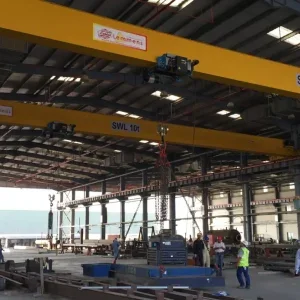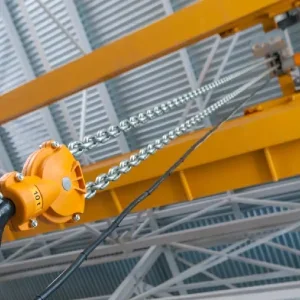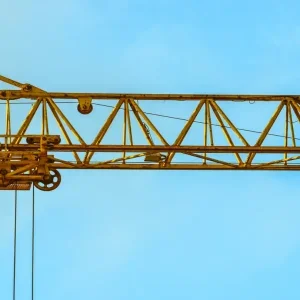Hazardous location cranes and components are designed to ensure the highest safety level required for explosive atmospheres in many chemical and petrochemical plants, oil refineries, gas power plants, waste water treatment plants, and other hazardous areas.

So-called CXT wire rope hoists and cranes cover a wide range of lifting capacities, hoist duty groups, and bridge and trolley types for applications up to 80t. Units are available in single- and double-girder construction using a profile or fabricated box girder design dependent on crane span.
“Smart dimensioning” of CXT hazardous location hoists and cranes provides maximum lift height and end approach, making the most use of new or existing building dimensions, according to Konecranes Americas. Built around the popular CXT hoist platform, these cranes and hoists provide “reliable and safe lifting solutions for hazardous environments,” it added.
CXT hazardous location cranes and hoists are cCSAus approved for Class 1 Division 2, groups C and D, and temperature class T3 environments with capacities up to 40t. ATEX certifications are available for hoists with higher capacities.
Hazardous location manual and electric chain hoists are available with capacities up to 5t. XN hazardous location hoists provide a reliable and economical solution built around the XN hoist platform.
Hazardous location products are used in a variety of applications, including chemical, petrochemical, food, power plants, waste water treatment plants, and electronics. Konecranes said it is the only supplier today in North America able to provide cCSAus and ATEX certificates on the complete CXT wire rope hoist assembly.
Konecranes can provide additional strengthening features such as bronze or bronze coated wheels, bronze coated hooks, and drop lugs.






